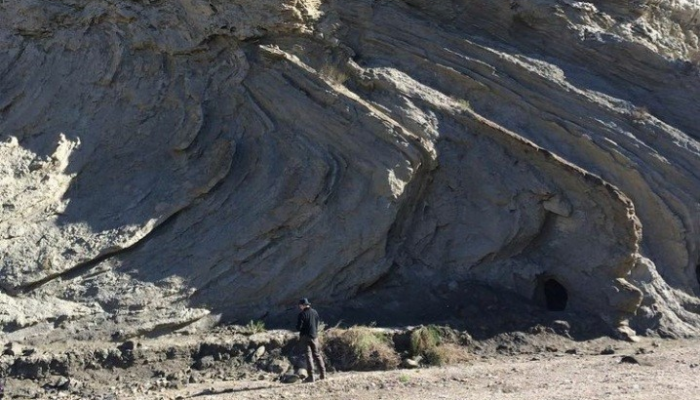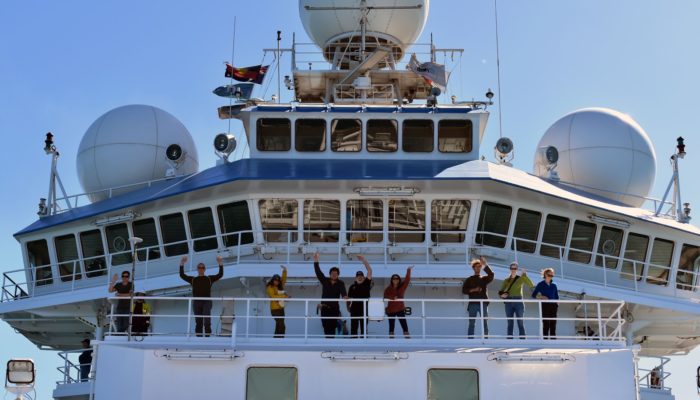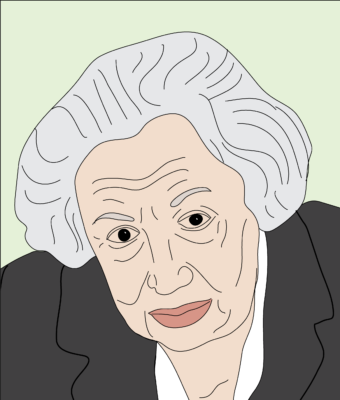In 1980 Brace and Kohlstedt published a short paper that constrains the strength of continental lithosphere by extrapolating laboratory measurements of rock strength to geological conditions. Their approach follows earlier work by Goetze and Evans (1979) and relies on two key considerations. First, the brittle strength is given by the frictional strength of rocks following Byerlee’s law (Bye ...[Read More]
#OnTheRocks – Because Earth is just beautiful!

From the time the first Kodak camera in 1888 went on sale we can say with confidence a geologist somewhere was trying to capture field photographs. We love to capture the beauty of the field and every geologist has a story to tell. The EGU would like to connect these stories globally in our new #OnTheRocks series. #OnTheRocks will produce a compilation of geological photographs on different scales ...[Read More]
TS Must-Read – Mckenzie (1978) On the development of Sedimentary basins
Continental extension strongly affects the topography of continents by shaping elongated rift valleys, referred to as rift basins in the geological record. A strong implication of the formation of these basins is a two-step subsidence history: an initial rapid subsidence during extension, and a second, slower subsidence once active extension has ceased. Although this observation was made already l ...[Read More]
TS Must-Read – Sibson (1977) Fault Rocks and Fault Mechanism
The paper “Fault Rocks and Fault Mechanisms” by R. H. Sibson (1977), was one of the first studies that established major connections between the rocks that form in faults, and their conditions and mechanics during formation at crustal scale. Concretely, Sibson (1977) established: 1.) links among the textures and lithologies that develop along fault zones (fault rocks), 2.) the rheological and crus ...[Read More]
Maria Vasilyevna Klenova (12 August 1898 – 6 August 1976): The polar scientist who was known as the mother of marine geology.
On the 12th of August 1898, Maria Vasilyevna Klenova was born to a working-class family in Irkutsk1. This city started as a military outpost in 1652, but had become a bustling city around the turn of the 20th century with around half a million inhabitants. In the year Maria was born, Irkutsk became connected to Europe by the infamous Trans-Siberian Railway. Maria did not stay in Irkutsk ver ...[Read More]
Beyond Tectonics: Fishing for Continents in the Furious Fifties and Roaring Forties

This edition of “Beyond Tectonics” is brought to you by Dr. Derya Gürer and Luca Magri. Derya is a Lecturer in Earth Sciences at The University of Queensland in Brisbane, and Adjunct Lecturer at the University of Tasmania, and Luca is a PhD student at the University of Tasmania in Hobart, Australia. In early 2020, they participated in a research voyage to one of the most remote places on the plane ...[Read More]
TS Must-Read – Riba (1976) Syntectonic unconformities of the Alto Cardener, Spanish Pyrenees: a genetic interpretation
In 1976 Oriol Riba published his paper on “Syntectonic unconformities of the Alto Cardener, Spanish Pyrenees: a genetic interpretation”, and despite appearing as a niche topic at first glance, it was voted as one of the papers in our Must-Read series. A major reason for that is that the paper presents a general model for syntectonic unconformities – an unconformity which illustrates both se ...[Read More]
Mind your Head: Taking care of yourself during the Corona-virus crisis – Part 2

It has been many months since the first lockdown, in some countries about a year, in other countries perhaps eight months. A continuing learning curve, with many ups and downs. Now the end is slowly appearing on the horizon, with promises of vaccines, and several countries making definite plans on when and how to vaccinate. Still – it will take at least 6 months, quite possibly more, until it is o ...[Read More]
TS Must-Read – Dewey and Bird (1970) Mountain belts and the new global tectonics
Long after the first attempts made by Wegener (1915), the theory of plate tectonics was progressively accepted by the Earth sciences community in the thrilling ‘60s thanks to observations from mid-ocean ridges (see TS-must-read blogpost of September 2, 2020; Dietz, 1961; Heezen and Tharp, 1965, Hess, 1962; Vine and Matthews, 1963). The question is then, what goes on at convergent boundaries, whe ...[Read More]
TS Must-read – Morgan (1968) Rises, Trenches, Great Faults, and Crustal Blocks
In his 1968 paper “Rises, Trenches, Great Faults, and Crustal Blocks”, Jason Morgan added the missing pieces of the plate tectonics: the representation of plates’ motion in terms of spherical surface, and plate rigidity. In the very first lines of the paper he describes his contribution as an “extension of the transform fault concept [of Wilson, 1965; see the TS-must-read blogpost of October 15, 2 ...[Read More]


